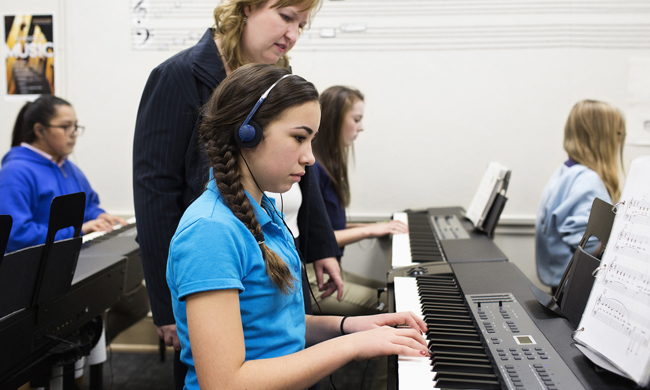Science in Everyday Life
09/14/2017 04:31AM ● By Family Features

During the school year, educators and parents often look for activities to spark creativity and engage kids to help enhance their educations. Additionally, school districts constantly search for new ways to inspire and pique children’s interest through project-based learning to increase results in science, technology, engineering and mathematics (STEM) standardized testing.
What parents and educators may not realize is STEM can play a role in even the most common extracurricular activities, from sports to painting to playing a musical instrument. These after-school activities and the science behind them can help teach children how science plays a role in their favorite extracurricular activities.
Hitting a Fly Ball: Some people may be under the impression that hitting a fly ball or home run in baseball is simply a matter of luck, but physics and the Magnus effect are what determine the trajectory of the ball. In order to hit a ball out of the park, it helps to have backspin, meaning the hitter needs to undercut the ball instead of hitting it straight on. The Magnus force on a ball with backspin will be upwards, allowing the ball to oppose gravity and stay in the air longer and, ultimately, travel farther.
Paint is More than Just Color: Crafting with paint is another beloved after-school activity. The majority of paints are made of three main components: the pigment, the binder and the solvent. The pigment provides the color, and colors are created through the reflection and absorption of light. The binder glues the pigment particles together and makes the paint stick to the surface. The solvent dissolves the pigment and binder into a thinner, less viscous liquid, making the paint spreadable.
The Science of Sound: People often think of music as an art, but without science, the sounds wouldn’t be possible. Music is created by soundwaves (vibrations) organized into patterns with pitch and rhythm. In order to hear music, the sound waves must travel through a medium. For example, air or water can be detected by a receiver such as the human ear or recording device. The size of the vibration determines how loud or how soft a sound is while the pitch (how high or low a sound is) is determined by the frequency (how many times the sound wave vibrates per second) of the soundwave, which is how different instruments can produce different sounds.
STEM Programs: While it’s important to show children how STEM plays a role in their everyday lives and activities, one of the best ways to instill passion and interest is by letting them experience and experiment with it themselves. Participating in a program such as ExploraVision, the only STEM-related competition of its kind, allows kids to create ideas for new technological innovations in response to current real-world issues. Participants work on their projects throughout the holidays, supplementing their science education, while also developing problem-solving, analytical and collaboration skills.
Parents and students can learn more about the competition and how to enter and teachers can find free tips for engaging students at exploravision.org.
Photo courtesy of Getty Images







